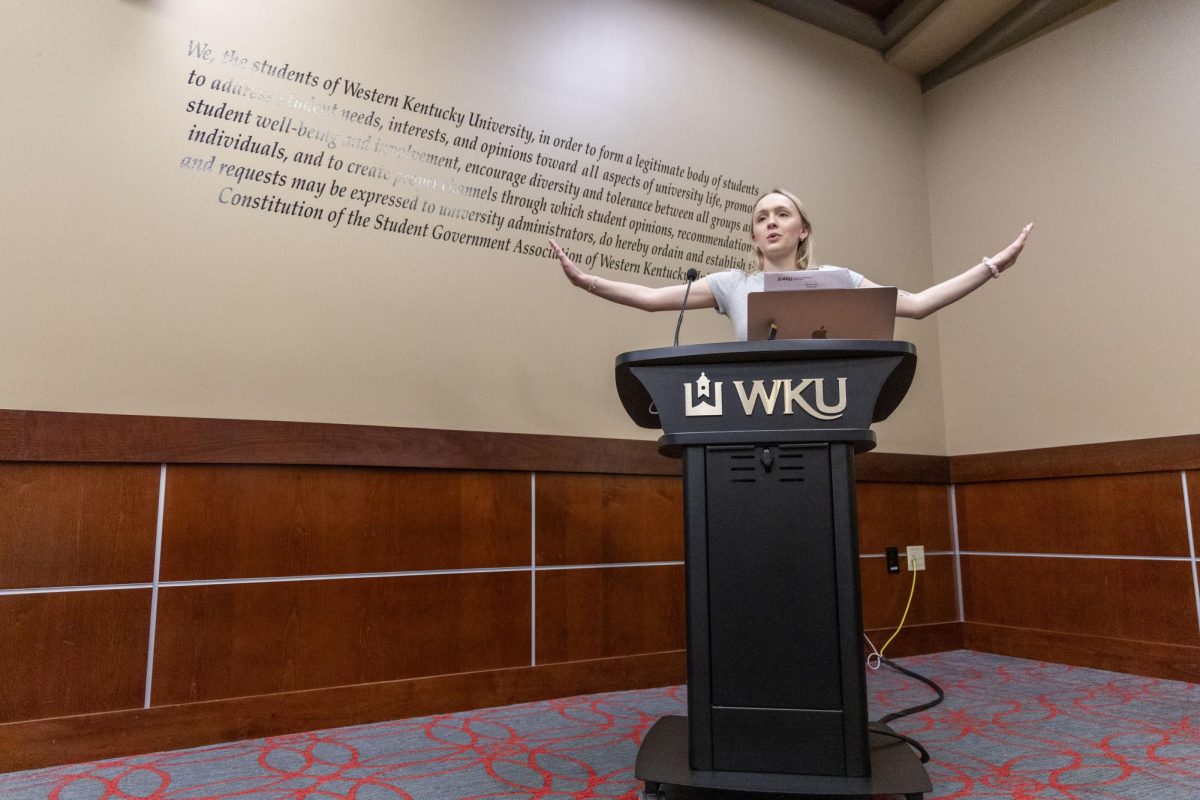Western and Anthem seeking ways to drive down drug costs
October 28, 2003
Zone maintenance technician David Appleby is constantly bombarded with ads for brand-name prescription drugs when he turns on the television.
Despite the companies’ marketing efforts, it hasn’t swayed Appleby toward their drugs.
He still asks his doctor to use generic medicine as much as possible, something that has helped hundreds of Western employees save money.
Prescription medicines are driving up medical costs, one of the reasons insurance premiums for university employees increase. To curb the trend, administrators are finding ways to reduce drug costs by encouraging the use of lower-priced generic drugs and wellness programs.
Between Jan. 1 and June 30, Western’s insurance plan paid out $562,488 in drug costs.
That accounts for 24.1 percent of medical costs to the plan.
In the same time period, Western paid out $244,389 for the top 25 brand-name drugs – 49.4 percent of total drug costs.
Prescription drugs have in past years made up anywhere from 22 to 27 percent of insurance payments, benefits coordinator Maribeth McBride said.
Drug costs have increased nationwide, she said.
McBride said brand-name drugs are more costly than generic drugs, but in some cases, brand names may be the only drug of that kind available.
Marketing
Benefits committee member Claus Ernst said several of the most used drugs by Western employees are relatively new.
Many brand-name drugs, including the newer drugs, are under patents that prevent other companies from making a generic brand. Once that patent expires, companies are allowed to make a generic version, driving the price down.
The popularity of newer drugs are the result of increased marketing of the pharmaceutical companies that make those drugs, a medical study by the Kaiser Family Foundation study said.
The study said the advertising budget of drug companies has increased to $2.7 billion in 2001 from $800 million in 1996.
McBride said doctors are supposed to mention all drugs that are available to treat a given health problem, but pharmaceutical representatives provide samples of their drugs to doctors to give to their patients.
That sometimes results in that patient insisting on a certain drug, he said.
The Kaiser study also said 86 percent of marketing is aimed at physicians, with 55 percent of them using drug samples.
Jim Morris, director of pharmacy at Greenview Regional Hospital, said some physicians have developed relationships with some pharmaceutical companies. They could be reluctant to use a generic brand out of loyalty to that company, he said.
Hospital physicians will sometimes insist on prescribing a brand-name drug, Morris said.
He said he often manages to convince them out of it.
Despite talk that physicians may be responsible for patients using brand-name drugs, a brand-name prescription may be the best treatment for some patients’ medical conditions, said Dr. Allen Redden with Health Services.
Redden said sales representatives usually come to him once a month promoting new drugs.
He said he usually considers the information they provide and compares it with medical journal reports and his own knowledge before making a decision on whether to use the new drug.
In general, he usually recommends the generic drug unless it proves ineffective.
“People do become aware that conditions are treatable with a prescription drug,” he said. “I use that opportunity to tell them what drugs work best in their situation.”
Bryan Carson, the coordinator of reference and instructional services at Helm-Cravens Library, said he discussed with his doctors different medicines he could take for his heartburn.
He said he would like to use generic medicines, but they don’t work as well.
“I want to use medicine that’s going to do the best for me,” he said.
Morris said 70 percent of the drugs used by the hospital are generic.
He will listen to presentations for newer brand-name drugs, but tries to do his own research on new drugs in addition to information he’s received from companies.
“I have to have documented proof that the new drug is safer and more effective than other drugs,” he said. “I want to see the pre-marketing studies that show it’s effective.”
What’s being done
Western’s third party administrator, Anthem, Blue Cross, Blue Shield, has taken several actions to make it more difficult for patients to pick up more expensive brand-name medicines.
As much as $22 billion in drug costs could be saved nationwide if generic drug use was increased from 43 percent to 60 percent nationwide, according to the National Association of Pharmaceutical Manufacturers in Garden City, N.Y.
Under a new program called THINK Generics, Anthem is trying to increase such use.
The plan, which was announced last week, will provide coupons to physicians throughout Kentucky to give to patients that can be used for a free supply of a generic drug.
Anthem, in turn, would pay the pharmacy the costs of the drug.
“If physicians want to prescribe a brand name, they can start with a sample,” said Mike Lorch, vice president of health care management for Anthem. “They haven’t had a way to give that same advantage to the patient if they want to prescribe generic drugs.”
Anthem will also not pay claims of some brand-name drugs unless a client tries a generic drug and proves it is ineffective as part of an authorized use program.
Under a three-tier program, a client may have to pay a greater co-payment for brand-name drugs.
Western has been looking into several programs to help encourage employees on the insurance plan to use generic drugs. One is an incentive program that would provide employees with rewards if they order a given supply of generic drugs.
Finally, they have provided educational programs during health insurance enrollment that provides information on the true cost of brand-name medicine.
“I think that the employees don’t know a generic is available,” McBride said.
Wellness
Western is also organizing a wellness program, which is a way to help solve potential health problems that can lead to high health costs, including drugs, McBride said.
“Our society is using drugs in some way to maintain not-so-healthy lifestyles,” she said.
Todd Misener, assistant director of health and fitness for the department of intramurals and recreation, said there are discussions between the benefits committee, Health Services Director Libby Greaney and himself on how to create such a program.
A wellness program may include education and incentive programs to encourage employee’ to live a healthier lifestyle.
“Ultimately when people are making those choices and making a more concerted effort through an increased awareness, they’ll take better care of themselves and reduce their health costs,” Misener said.
Reach Mai Hoang at news@wkuherald.com.












